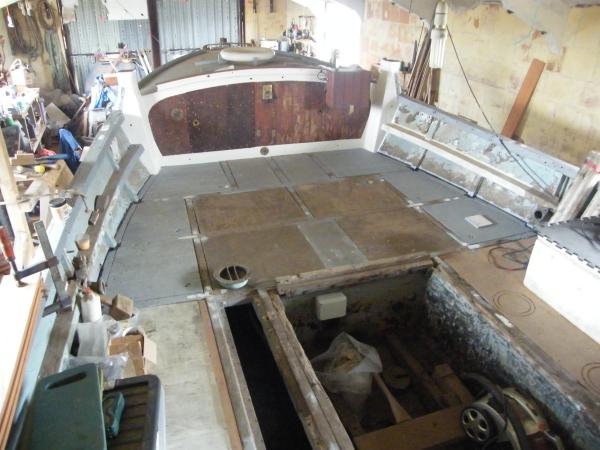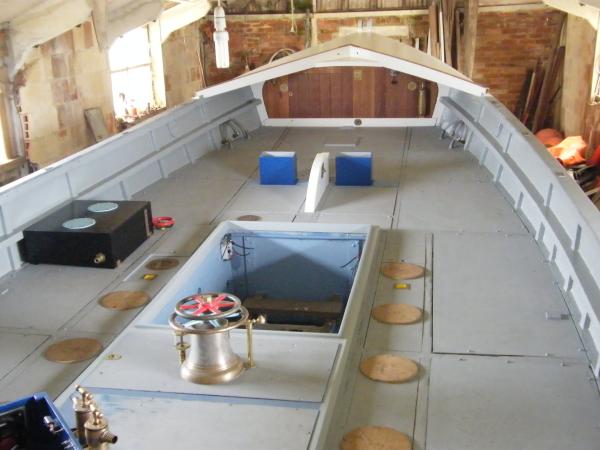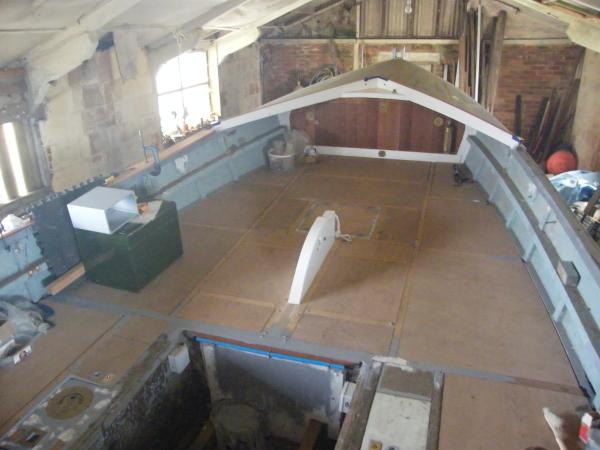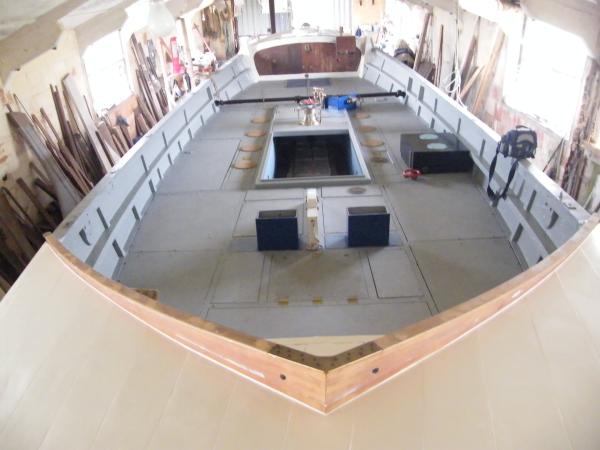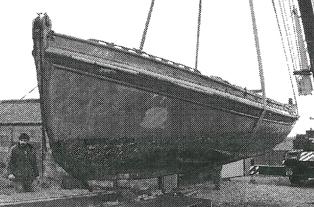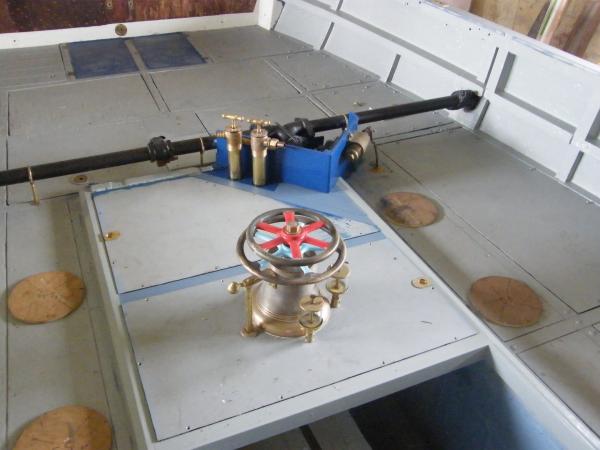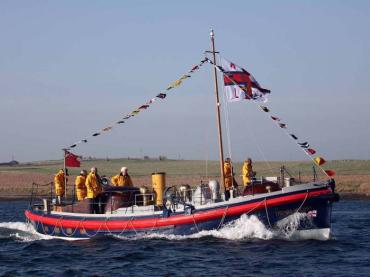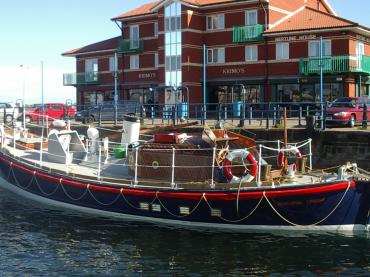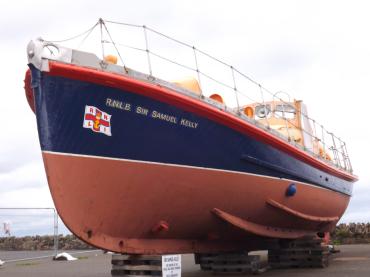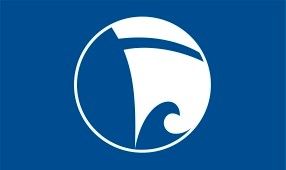
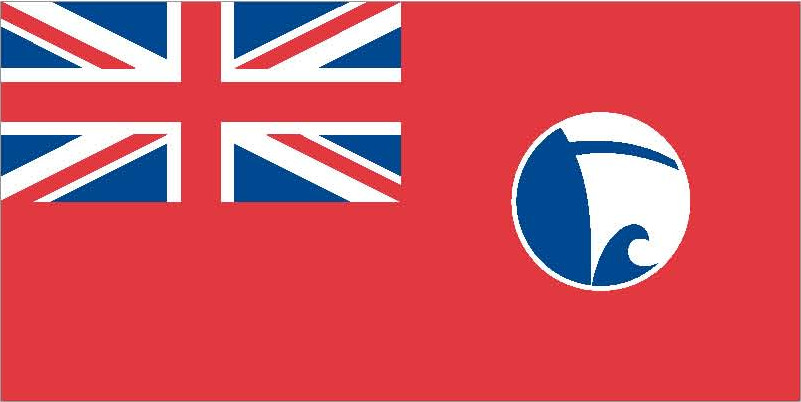
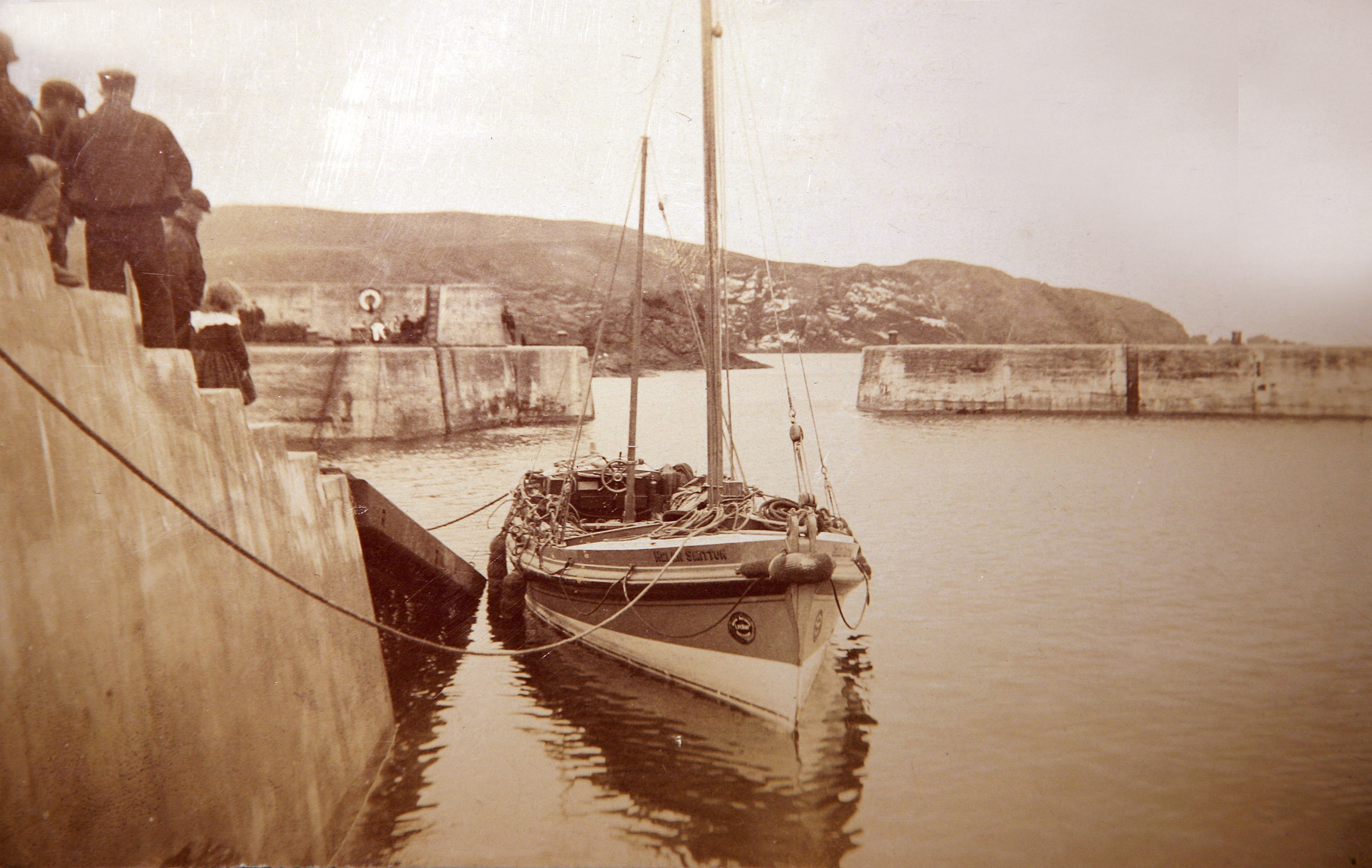
Details
Construction
Dimensions
History
HELEN SMITTON is a non self-righting Watson 38’ motor lifeboat, built by the Thames Ironworks in 1910. She was one of the first lifeboats built with an engine, a Wolseley 37hp petrol engine capable of driving her at 7.25 knots. The propeller is positioned in a midships tunnel; the original being variable pitch. She could also be driven by oars and dipping lug rig, the engine being considered an auxiliary.
Being a wide-beamed non self-righter with good lines, she apparently sails very well and is easily driven. Her hull and decks are two-layered double diagonal Honduras mahogany on Canadian rock elm frames and stringers. The floors are iron. Between each layer of hull/deck is a layer of calico coated with white lead paste. All the fastenings are naval brass, bronze or copper with iron fastenings being used where iron fittings are present. She has a fixed iron ballast keel weighing 1.5 tons and a triangular drop keel that passes through the fixed keel. Water that accumulates on the weather deck is drained via freeing ports directly through the hull skin.
The engine is located within a watertight compartment, the air for the engine being drawn via the aft compartment so that any water entering the intake system drains into the bilges. Unusually, the engine exhausts midships, just above the waterline, the fumes being directed to the leeward side of the vessel by a system of valves.
Records of her launchings:
19 Mar 1912 - four local fishing boats.
5 Sep 1914 - HMS Pathfinder torpedoed and sunk by U-21. 18 survivors out of a total crew number of 268. The sinking and lifeboat's return recorded in a letter written by Aldous Huxley to his father.
15 Nov 1915 - two local fishing boats.
20 Apr 1917 - Ringholm of Bergen torpedoed and sunk 5 miles off St. Abbs Head. Special letter of thanks to crew from RNLI for prompt response.
4 May 1917 - SS Ordense torpedoed off St. Abbs Head.
9 May 1917 - SS Kitty torpedoed and sunk.
8 Dec 1922 - Escorted the Violet and Welfare into St. Abbs.
26 Feb 1923 - Escorted the Guide into St. Abbs.
26 Sep 1932 - Stood by Laurel at St. Abbs entrance during NE gale.
20 Aug 1934 - Escorted two vessels missing in gale, the Victory and Billows Crown.
12 Sep 1934 - Local boat caught fire and sank. Boat launched but another local boat rescued crew.
5 Dec 1934 - SS Dunscore listing. Vessel rolled over and sank as lifeboat approached.
17 Mar 1935 - Steam trawler Tyrwhitt, helped re-float after grounding.
24 Dec 1935 - Stood by Victoria, Violet and Laurel during SE gale.
21 Feb 1936 - Escorted Myrtle into harbour.
4 Aug 1936 - three bathers in difficulty, one died.
Malcolm Brown, Conservation Specialist, has now restored HELEN SMITTON to the point where all the backbone – floors, frames, stringers, keel, sternpost, stem etc. have been re-constructed and all her major fastenings, including keel bolts, renewed. She is being re-constructed at Malcolm’s workshop near Dale, Pembrokeshire.
Significance
What is the vessel’s ability to demonstrate history in her physical fabric?
HELEN SMITTON has been professionally reconstructed in a way that leaves her main structure intact and her appearance as it was in 1910. Approximately 95% of her original wooden hull remains as no frames needed replacing. Some 70% of her steel floors and fastenings have been replaced or repaired, as have most of her major fastenings including the keel bolts. Approximately 60% of the weather deck structure and her end box decks have had to be replaced. Most major fittings survive, but 90% of the galvanised steel fittings and numerous bronze fittings have had to be replicated to the original specification. She has been conserved using traditional methods and materials, with the exception of the use of epoxy resin to repair major structural members (such as stringers) and marine plywood to reconstruct the drop keel trunk. Her original petrol engine and fuel tanks do not survive and the vast majority of her air cases are missing. Her mizzen mast is original, but the main mast is believed to be a replacement. HELEN SMITTON’s construction provides an early example of a double-diagonal/calico hull and deck, and she has her builder’s number, TL47, carved into her stem.
What are the vessel’s associational links for which there is no physical evidence?
HELEN SMITTON has a strong association to the port of St. Abbs where she served from 1910 to 1936. She was built for the station after Jane Hay campaigned for a lifeboat following the loss of all hands on the ALFRED ERLANDSEN, wrecked on Ebbs Carr rocks on 17 October 1907. Jane Hay went on to become the first Honorary Secretary of the station and, upon her death, she left a legacy to the RNLI which was used to construct a lifeboat house for HELEN SMITTON. The vessel was designed by the reputable naval architect G.L. Watson and was one of only two of her kind built. Her sister ship, ELLIOT GALER, was wrecked in the Milford Haven Waterway in the 1980s. HELEN SMITTON was crewed by local fishermen as St. Abbs was a working herring fishing port.
How does the vessel’s shape or form combine and contribute to her function?
HELEN SMITTON’s shape was influenced by those of previous lifeboats, with her design closely related to the 38’ sailing and pulling lifeboats. However, being intended for use on a slipway and as one of the first purpose-built motor lifeboats, she has a wider beam and is more heavily built. She has a flush weather deck with an engine box amidships, but no protection for her crew. Her design encapsulates the seaworthy characteristics of a traditional Scottish fishing vessel, with a lugsail, wide beam, flush deck, low freeboard and heavy hull. She was fitted with a watertight and air tight weather deck, end boxes and engine box. Ventilation for the engine was taken from automatic closing valves in the end boxes. Her engine exhaust amidships had a system of valves allowing the fumes to be directed to the leeward side. Her large relieving tubes had flap valves to shed water from the weather deck and her lifting rudder was cradled within the quadrant, controlled by lines from the ship’s wheel. She had five rowing positions per side. Her propeller was fitted in a protective tunnel with direct access from deck level, via hatches, for the removal of wreckage or rope which might foul it. Her steel drop keel was hinged within the ballast keel, so that it was capable of being instantly cut adrift at need.
Key dates
-
1898
Built White Bros of Southampton as a Yacht (Yawl) for a Danish Shipping Merchant operating in Manchester
-
1909
She was sold to a gentleman from Crosshaven in County Cork
-
1971
She was sold to her present owner who is the 21st owner
-
2003
The owner began a major restoration
Grants
-
January 2019
A Sustainability Award of £1000 for remedial work to the vessel's relieving valves was made from the Strategic Development Fund of National Historic Ships UK
Sources
Elder, M, For Those in Peril, John Murray, 1963
Denton, T, Lifeboat Enthusiasts' Society Handbook, 2013
Leach, N, RNLI Motor Lifeboats, Landmark Publishing Ltd, 2005
The Lifeboat Journal of RNLI 235, 1910
The Lifeboat Journal of RNLI 251, 1914
The Lifeboat Journal of RNLI 241, 1911
The Lifeboat Journal of RNLI 247, 1913
Own this vessel?
If you are the owner of this vessel and would like to provide more details or updated information, please contact info@nationalhistoricships.org.uk

